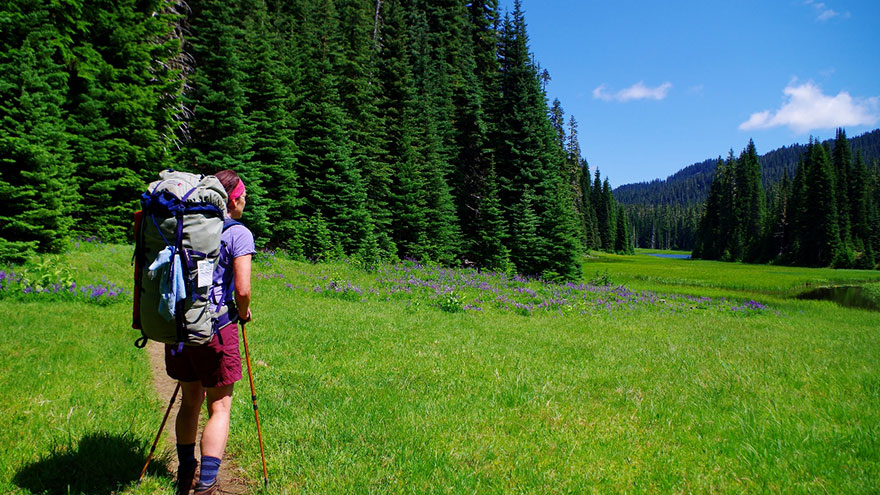Climate in the Pacific Crest Trail in Washington
The epic Pacific Crest Trail stretches from Mexico to Canada, crossing through California, Oregon and Washington on its 2,650-mile journey.
The trail draws thousands of hikers and equestrians each year. In Washington, the PCT heads through the Columbia Gorge and through the Cascades, hitting varied regions and elevations with a range of climates. The weather also can vary greatly depending on the season.

Spring
Spring is a tricky time to hike the Pacific Crest Trail in Washington. While lower elevations close to sea level, such as areas near the Columbia Gorge in the southern part of the state, experience mild weather, the North Cascade Range is a different story.
This part of the trail is the wettest of the entire route, as storms pass through for most of the year, dumping large amounts of rain and snow. Rainfall ranges from a quarter of an inch to nearly an inch a day, and snowfall can accumulate quickly — as much as several inches in a day.
As a result, there are about 750 permanent snowfields and glaciers, some of which hikers must traverse as they cross the North Cascades. Other sections of the trail climb to high passes and ridges — from 4,000 to 7,000 feet — where cold, rainy weather persists into July most years.
Summer
Summer is generally a good time to hike the PCT in Washington, as extreme high temperatures are rare, especially at high elevations. The weather is sunny and mild, with daytime highs in the 60s and 70s and overnight lows in the 50s.
In addition, the rainy season in western Washington ends by July, and the dry weather continues most years until late September or early October, making these months pleasant for hiking. Be prepared for sun exposure in areas near Snoqualmie Pass, where the trail crosses through once-forested areas that have been clear-cut by loggers.
In addition, the Cascades experience occasional summer thunderstorms; hikers on high ridges should watch for thunderclouds and take cover at lower elevations if lightning flashes.
Fall
Early fall is generally mild, while late fall can be cold and rainy as winter approaches. Temperatures begin to fall, with overnight lows approaching the 30s and daytime highs rarely reaching the 60s. Hikers should always carry rain gear and be prepared for gradually cooling night temperatures.
Occasionally snow falls at higher elevations — around 4,000 feet — in late fall. In September and October, hikers can see colorful displays of fall colors; huckleberry bushes on high slopes turn red and orange, and deciduous larch trees sport yellow leaves this time of year.
Winter
In winter, the Pacific Crest Trail in Washington receives heavy snowfall, especially at higher elevations. Some days, a foot of snow may accumulate, though a few inches is more common. Most lower elevations (from sea level to a few hundred feet above) will also get snow in January and February.
As a result, most thru-hikers do not travel here in winter. However, day hikers can choose certain sections of the trail to hike with snowshoes on clear days, when snow isn’t falling heavily.
Though temperatures in winter hover at or below freezing, even during the day, snowshoeing is an intense cardiovascular activity that keeps you from feeling uncomfortably cold with minimal layers.
You Might Also Like : Dirt Bike Trails in Washington

